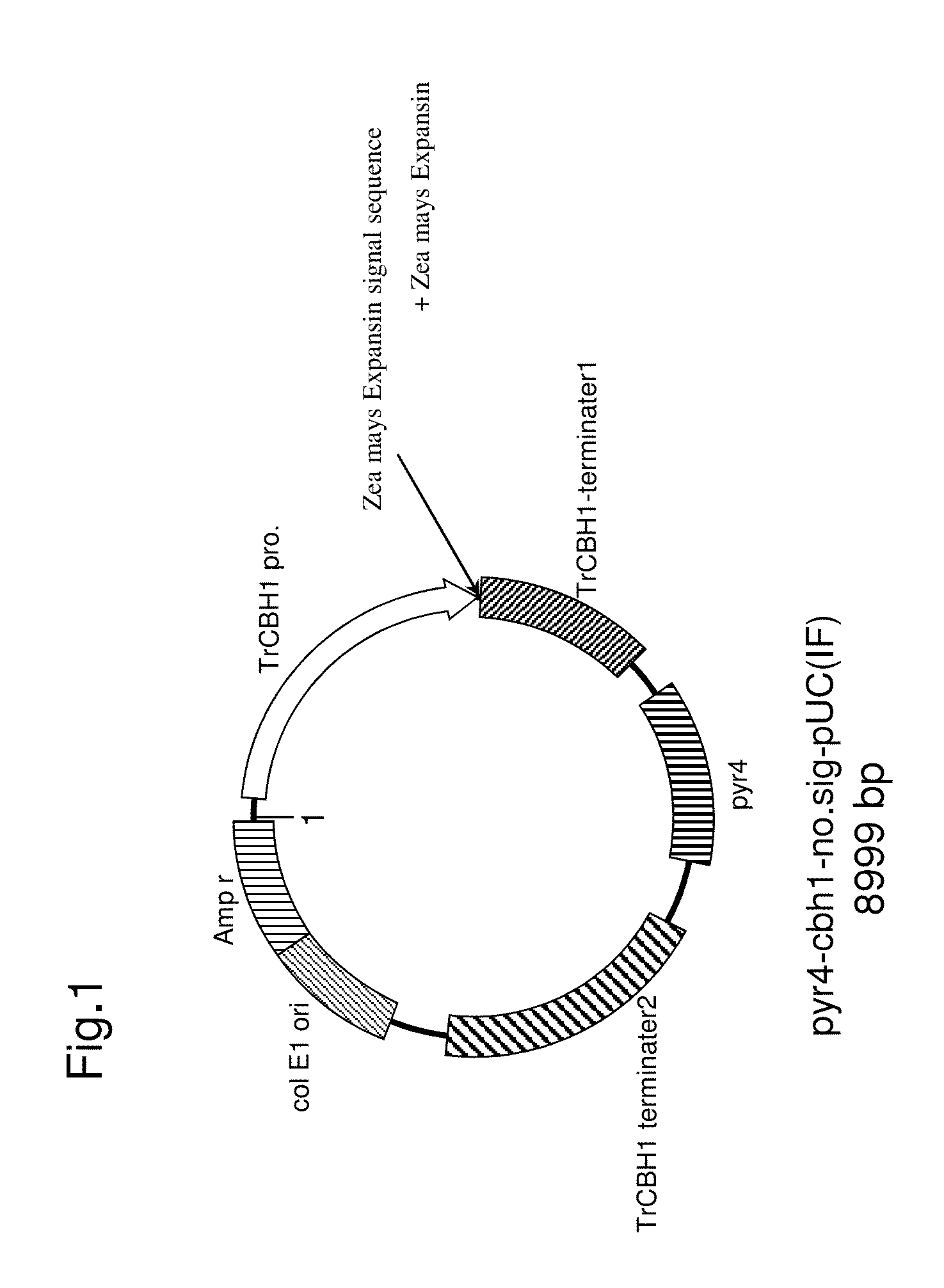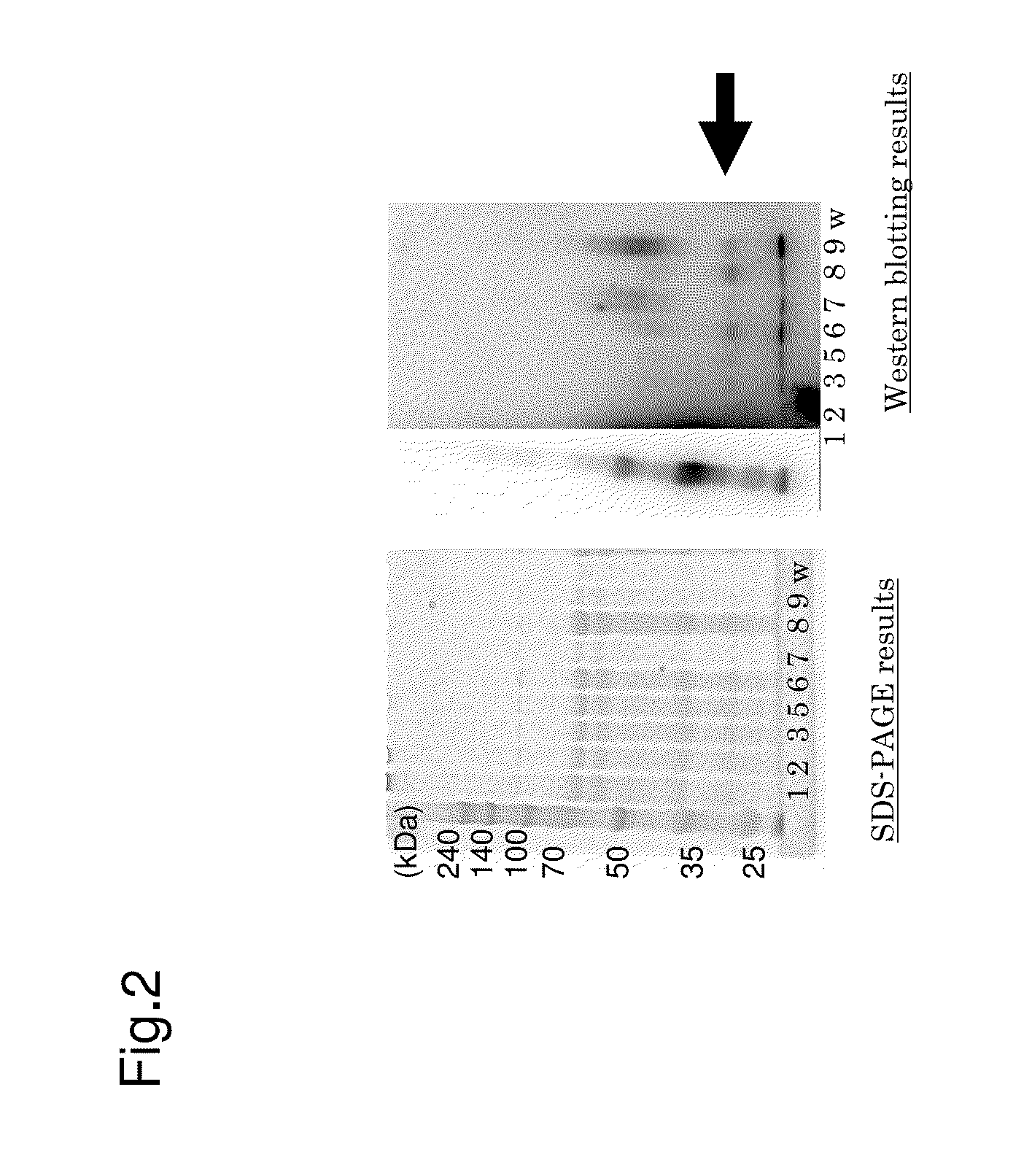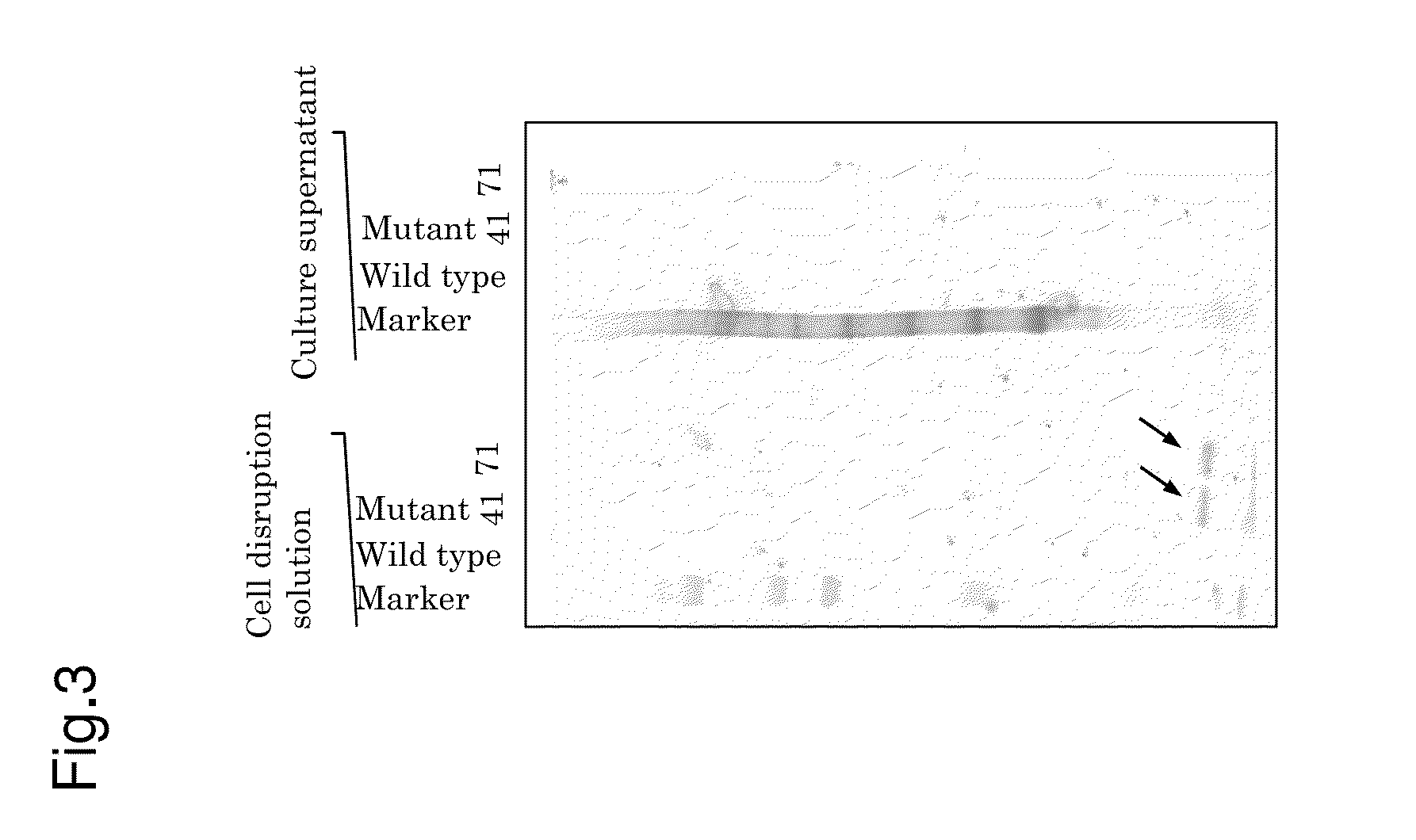Mutant microorganism belonging to the genus trichoderma and method for producing protein using the same
a technology of trichoderma and mutant microorganisms, applied in the direction of microorganisms, biochemical equipment and processes, peptide sources, etc., can solve the problems of inability to achieve plant-derived protein secretory production and the inability to carry arbitrary gene secretory expression, etc., to achieve excellent production efficiency
- Summary
- Abstract
- Description
- Claims
- Application Information
AI Technical Summary
Benefits of technology
Problems solved by technology
Method used
Image
Examples
example 1
[0051]In this Example, a maize-derived expansin gene was introduced into Trichoderma reesei.
[0052]In this Example, a vector incorporating a maize-derived expansin gene was constructed (FIG. 1). The vector named as pyr4-cbh1-no.sig-pUC(IF) (shown in FIG. 1) was obtained by inserting the upstream region of the CBH1 gene including a CBH1 promoter at the KpnI and AatII sites of a pUC 19 vector, inserting the downstream region of the CBH1 gene including the CBH1 terminator at the KpnI and SphI sites of the pUC19 vector, and inserting the pyr4 sequence at the EcoRV and BamHI sites of the pUC19 vector.
[0053]In addition, the entire region of the maize-derived expansin gene including a region encoding the signal peptide was chemically synthesized in this Example. At this time, the nucleotide sequence of the maize-derived expansin gene was designed so as to use codons, which are frequently used for Trichoderma reesei used as a host. The nucleotide sequence of the region encoding the signal p...
example 2
[0059]In this Example, secretory production of a protein of interest was examined using a signal peptide contained in a maize-derived expansin. Specifically, secretory production of white-rot-fungus (Phanerochaete chrysosporium)-derived CBH2 used as a protein of interest was examined in this Example.
[0060]First, a polynucleotide encoding a fusion protein obtained by fusing a signal peptide contained in a maize-derived expansin (SEQ ID NO: 1) and a region of CBH2 excluding a signal peptide was chemically synthesized. At this time, the nucleotide sequence of the synthesized polynucleotide was designed so as to use codons, which are frequently used for Trichoderma reesei used as a host. In addition, the nucleotide sequence shown in SEQ ID NO: 2 was used as the nucleotide sequence of a region encoding the signal peptide region of a maize-derived expansin as in the case of Example 1. Further, the nucleotide sequence of a region of the Phanerochaete chrysosporium-derived CBH2 gene excludi...
example 3
[0064]In this Example, secretory production of a protein of interest was examined using a signal peptide contained in a maize-derived expansin. Specifically, in this Example, secretory production of anti-egg-white lysozyme camelid single-domain VHH antibodies (1ZV5) used as a protein of interest was examined.
[0065]Also for the anti-egg-white lysozyme camelid single-domain VHH antibodies (1ZV5), a polynucleotide encoding a fusion protein obtained by fusing a signal peptide contained in a maize-derived expansin (SEQ ID NO: 1) and anti-egg-white lysozyme camelid single-domain VHH antibodies was chemically synthesized in the manner described above. The nucleotide sequence and the amino acid sequence each encoding the anti-egg-white lysozyme camelid single-domain VHH antibodies used in this Example are shown in SEQ ID NOS: 9 and 10, respectively. In addition, Genst, ED. et, (2005), PNAS, 103(12), pp. 4586-4591 can be referred to for the anti-egg-white lysozyme camelid single-domain VHH a...
PUM
| Property | Measurement | Unit |
|---|---|---|
| molecular weight | aaaaa | aaaaa |
| sodium dodecyl sulfate polyacrylamide gel electrophoresis | aaaaa | aaaaa |
| affinity | aaaaa | aaaaa |
Abstract
Description
Claims
Application Information
 Login to View More
Login to View More - R&D
- Intellectual Property
- Life Sciences
- Materials
- Tech Scout
- Unparalleled Data Quality
- Higher Quality Content
- 60% Fewer Hallucinations
Browse by: Latest US Patents, China's latest patents, Technical Efficacy Thesaurus, Application Domain, Technology Topic, Popular Technical Reports.
© 2025 PatSnap. All rights reserved.Legal|Privacy policy|Modern Slavery Act Transparency Statement|Sitemap|About US| Contact US: help@patsnap.com



